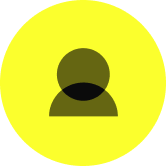How to become a UX Designer in 2020
The COVID-19 pandemic has caused organisations to embrace new technologies more than ever before. So despite short-term challenges and cut-backs across all areas of the job market, there is one discipline that stands to bounce back stronger than ever in the second half of 2020.
But just how do you break into a new career in UX & UI?
1 – IMMERSE YOURSELF
There is more free resource than ever at your fingertips, take advantage of this and commit to giving yourself the best chance at doing well. Attend every free event on offer, watch the latest YouTubers, download podcasts and read every book going. Give yourself the best chance possible of success by going into ‘sponge’ mode to soak up what’s on offer.
Once you’ve established a strong interest in UX/UI, talking to people in the industry and listening to how they describe their jobs is illuminating. Hear about their everyday and make sure you find it genuinely interesting. If you don’t, then you have saved yourself a lot of time, effort and money.
It is also important to consider the practical sides to a job. Do you know the salary? Will it pay your mortgage? These critical questions will help you assess whether or not a career in UX design will be practical for you.
And if it still sounds like the right path for you, it’s time to truly get stuck in.
(Check out our upcoming free workshops to ‘fully immerse yourself’ in the world of UX!)
2 – FIND A MENTOR
By fully immersing yourself, hopefully you have created great opportunities to network and meet others in the field. Consider who wow’d you or struck a chord – whether it was someone you heard speaking at an event or a UX blogger – find a way to connect with them. Don’t be afraid to find them on LinkedIn! Start off asking for a little advice or a phone call at a time that’s convenient for them as you would like to follow in their footsteps – it will only ever be flattering.
These relationships (both short and long term!) will prove invaluable for your early development as a UX’er.
The UX community is incredibly supportive and there is a real drive to nurture new talent – take advantage of this opportunity. The power of good mentorship is second to none. Find someone that can be on your side to support and help you navigate the overwhelming amount of advice and choice. They will be a constructive cheerleader, guiding you through the best training to undertake, coaching you through creating a great portfolio and offering wise words of encouragement.
3 – TRAIN UNDER THE CLOSE EYE OF AN EXPERT
Consider investing in the right training course that will provide you close access to an industry expert and make sure you do your research to make sure you are getting value for money.
To develop a strong understanding of concepts and methodologies, it is key to find a course that delivers live workshops and content – whether that be online or in-studio – to enable back and forth, in-depth discussion with debate and constructive feedback every step of the way. An expert in the field will be able to drive you forward in the right direction whilst also offering important insight from their own experiences.
Important: Make sure you really are training ‘under the close eye’ by avoiding large class sizes, look for more intimate courses to ensure you receive the expert’s attention and advice.
Whilst ‘3 day immersives’ and ‘5 day bootcamps’ provide a tempting quick win, there is a notable difference in quality of work and comprehension when someone has taken the time to train over a matter of weeks or months. This time between sessions allows knowledge to sink in and ideas to evolve, resulting in better case studies for your portfolio.
4 – GET REAL
Apply your newfound skills, work with a real client and have them scrutinise your work. There’s nothing like working for a real client who has some skin in the game. You will be able to practise and prove your end-to-end skills whilst gaining a strong and unique project for your portfolio so you stand out from the crowd. It is really important to learn how to manage your client as well as respond to feedback.
Talk to a friend who has a side hustle, a family member with their own company or the small retail business down the road – listen to their current challenges with their online presence and see if you can help them pro-bono with their website. This free work will pay off when it comes to having a winning portfolio.
A lot of courses offer class-wide hypothetical briefs, so you end up with very similar outcomes and final projects in a sea-of-sameness for entry level roles. Give yourself the best opportunity to succeed by taking your initiative to land some distinctive projects where you really have to analyse and appraise a situation, and deliver.
As a result, you will grow in confidence, become far more creative and come up with unique design solutions.
5 – FIND YOUR ANGLE
How did you end up wanting to pursue a career in UX? What inspired you? What is your journey up until now that has manifested in a fascination with human-interaction design and behaviour? Look at your past and start to connect it to the world of UX to craft your narrative.
Hiring managers want to buy into your passion and drive – help them to understand you. What makes you stand out from the many applicants applying for the same entry-level job? What is your personal brand?
6 – BUILD YOUR STORY
With each project under your belt, you can begin to build your story. You want it to be as unique as you are – develop your angle to devise a strong theme throughout your projects which you can use to reinforce your personality, your motivations and vision.
Your portfolio should illuminate your personal brand and journey through case studies that succinctly showcase your approach, process and the challenges you overcame. The story and thinking behind the project is the most important, not the output. Aim to have 3 compelling projects that present your skillset.
Luis Beremun Castro, UX Designer and Mentor, commenting on hiring Junior UX Designers wrote “Every time I see a young UX Designer working hard to get their first job I remember when I was like them, knocking doors with a printed portfolio full of school projects. Yes, printed portfolio (I am not that old, I just started working very early).
Now as a Senior with almost two decades of experience, I am more likely to be at the other side of the room during the interview. I get to read every single cover letter and the resume (just kidding, I click to the portfolio first, then check the resume and almost never read the cover letter).”
Your portfolio is your key to success. Use it wisely.
(For portfolio inspiration, check out this great website! https://www.bestfolios.com/home)
7 – TELL YOUR STORY
Your portfolio is looking great. Let’s shout about it. Practise pitching it over and over again to different people from diverse backgrounds and all sorts of design expertise. Get them to challenge you and to interrogate your thinking, ask them to dig holes in your approach, put your pride aside and be ready to listen to what they think. The responses will help you note any recurring issues, refine your ideas and prepare to defend them when needed. Use this feedback to strengthen your story and improve.
By doing so, you will be more than ready to nail an interview and be far better at handling the unexpected.
8 – SECURE A ROLE
Now it’s time to secure a role. Your first job is critical – you want to look for a well functioning design team with great leadership and a clear vision within an organisation where design is respected. A supportive and encouraging team culture will allow you to continue to learn and grow whilst in the early days of your career.
What type of organisations should you look to apply to? Well as a rule of thumb, agencies and series A/B/C+ startups provide great opportunities to Junior UX Designers – they will offer a wide range of projects, fast paced environments and exposure. Corporations tend to be good options but early on, juniors tend to be siloed into ‘waterfall’ work practises and work on similar projects throughout their time. Seed stage startups are very tough and volatile for junior UX designers and often lack mentorship – they suit more experienced UX’ers.
Wherever you apply, the job should provide you with a well-rounded foundation of experience. You should establish whether the opportunity offers diverse projects across the end-to-end process. Remember that an interview is just as much about you sussing out the company, as them assessing you – ask considered questions to highlight whether it is the right opportunity for you at this stage in your career.
9 – KEEP DEVELOPING
You’ve got the job, but don’t stop now. Continue to network, immerse yourself and develop your story.
Go wider than UX/UI, make sure you also look at other design disciplines to expand your knowledge – such as industrial design, product strategy, service design, behavioural change and economics. This will empower your design thinking skills and process.
Use your social media platforms to amplify your voice. Ensure you are regularly posting and commenting on relevant content, actively getting involved in topical discussions online and perhaps start contributing your own material. Make sure you stay true to your ‘angle’ and story. Let social media reinforce your positioning and personal brand.
Beyond this, give back to the design community by attending and supporting local events. You will become a better designer as a result and reap the rewards.
Demand more for your money.
At Experience Haus, we pride ourselves on providing the best possible start for our students by covering all the steps needed to break into a career in UX at a much more affordable price compared to other training providers.
Check out our upcoming Product Design (inc UX/UI) In-Studio Course and UX/UI Online Course dates to see how you can join our next cohorts!




